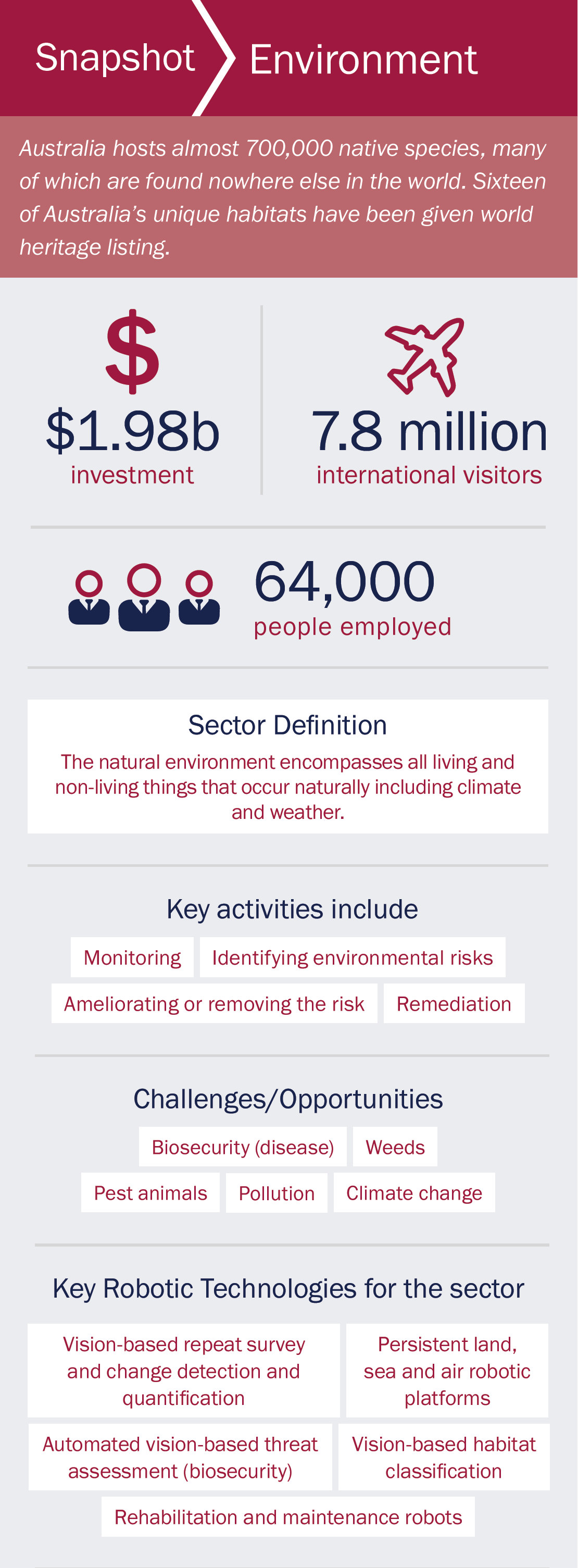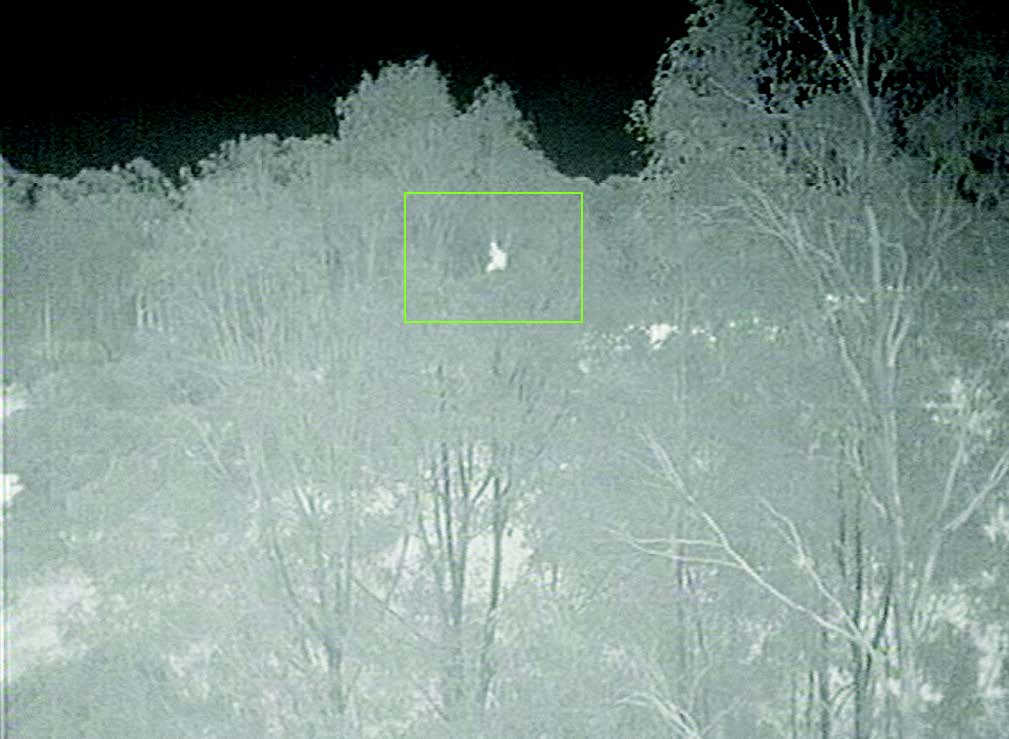
Robotics and the environment today
Despite the Australian continent representing one eighth of the planet’s land surface, Australia has only 0.32 per cent of the Earth’s population. Furthermore, most of Australia’s population (90%) lives in urban coastal areas, largely separate from the bulk of the country’s biodiversity and natural assets. Hence, Australia has a set of unique drivers to adopt and exploit robotic and remote sensing (including computer vision) technologies to monitor, manage, and protect the natural environment.
Urbanisation and a growing Australian population are placing localised pressures on the environment for housing, food, and water (habitat loss), waste management, and energy. Consequential effects include decreased air quality in urban centres due to pollution, risks of disease due to litter and food scraps (e.g, malaria, dengue, rabies), and contamination of food and water supplies from industrial activities and accidental releases.
The threats and opportunities relating to the broader Australian environment are vast and significant. The risks from local as well as global influences (e.g., goods movement, resource extraction, pests, fires, and climate change) require constant vigilance at massive scales. This is made more difficult due to the vastness, land and sea-scape diversity, and low-population densities of much of the continent. Consequently, Australia needs innovative tools to allow upscaling of monitoring programs and ways to help monitoring, intervention, threat removal, remediation, and restoration at national, as well as local, scales. This is an opportunity for robotics to play a role in all these steps on land, in the air, underwater and on water surfaces.
Environment-based tourism is of significant economic importance to Australia, contributing $AU56 billion each year to the economy. For example, the Great Barrier Reef hosts two million visitors every year, contributing $AU6.4 billion to the Australian economy, and is directly responsible for 64,000 jobs in related sectors such as tourism [DEL171] (see Chapter 7). Robotics have a critical place in measuring and assessing the health of coral reefs across tropical marine Australia. First trials of reef protection technology, such as COTSbot and Rangerbot (see Case Studies p. 155-156), required the establishment of guidelines on the application of robotic and vision technologies for use in helping to protect the Great Barrier Reef. Similar guidelines are required if these technologies are to help solve other environmental challenges.



